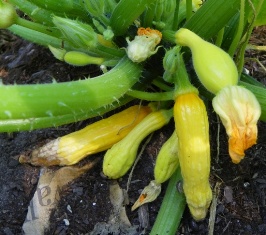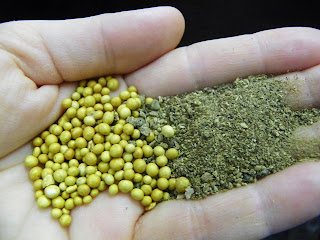 |
| Blossom end rot on squash fruits. |
These are the symptoms of a common disorder known as blossom end rot. Recent low nighttime temperatures likely triggered the blossom end rot we are seeing now. Fruits that show blossom end rot will not develop properly and should be removed from the plant.
Several other common soil and weather conditions can cause this disorder, all of which must be managed to prevent blossom end rot from developing at anytime during the harvest season. To learn more read the whole article posted on the Pender Extension website: http://pender.ces.ncsu.edu/2013/05/why-are-my-squash-rotting/





